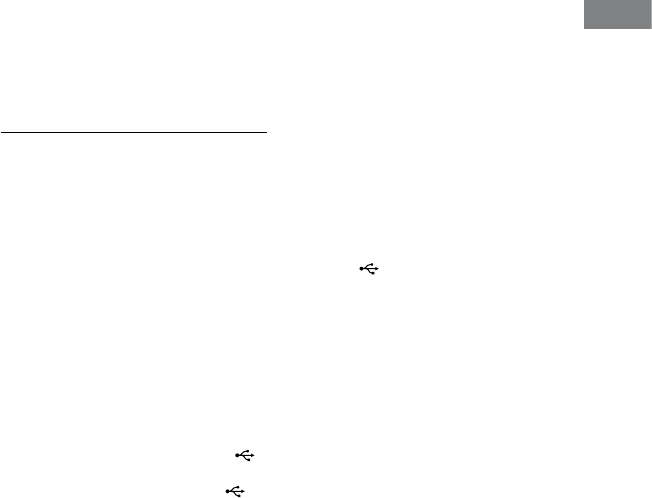
CMT-HX3.GB.3-095-514-11(1)
23
GB
Others
Play does not start from the rst
track.
Press PLAY MODE
repeatedly until
both “PGM” and “SHUF” disappear to
return to normal play.
Starting playback takes more time
than usual.
e following discs take a longer time
to start playback.
a disc recorded with a complicated
tree structure.
a disc recorded in multisession
mode.
a disc that has not been nalized (a
disc to which data can be added).
a disc that has many folders.
USB device
Are you using a supported USB
device?
If you connect an unsupported USB
device, the following problems may
occur. See “Playable USB devices”
(page 29) for the supported device
types.
e USB device is not recognized.
File or folder names are not
displayed on this system.
Playback is not possible.
e sound skips.
ere is noise.
“Over Current” appears.
A problem has been detected with the
level of electrical current from the
(USB) port
. Turn o the system and
remove the USB device from the
(USB) port
. Make sure there is no
problem with the USB device. If this
display pattern persists, contact your
nearest Sony dealer.
There is no sound.
e USB device is not connected
correctly. Turn o the system, then
reconnect the USB device and check if
the USB MEMORY indicator
lights
up.
The sound is distorted.
e bit rate used when encoding the
les was low. Send les encoded with
higher bit rates to the USB device.
There is noise or the sound skips.
Turn o the system, then reconnect the
USB device.
e music data itself contains noise.
Noise may have been introduced
when creating music data due to the
conditions of the computer. Create the
music data again.
When using the USB storage media,
copy the les to your computer, format
the USB storage media in FAT16 or
FAT32 format, and copy the les to the
USB storage media again.*
The USB device cannot be connected
into the (USB) port
.
e USB device is being connected
backwards. Connect the USB device in
the correct orientation.
The USB storage media which has
been used on another device does
not work.
It may be recorded in an unsupported
format. If so, rst take the precaution
of backing up important les on the
USB storage media by copying them to
your computer hard disk. Next, format
the USB storage media with a FAT16
or FAT32 le system and transfer the
backed-up audio les onto the USB
storage media again.*
Continued


















